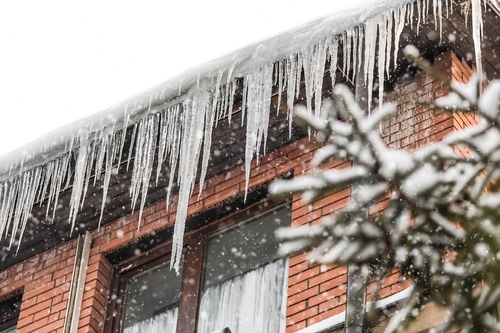The 2022 holiday season across the Southern U.S. was disrupted by an Arctic blast on Dec. 24 that exploded across Georgia, Florida, Alabama, and Louisiana, delivering sub-freezing conditions that lasted for several consecutive days to a region where temperatures normally drop below 32°C for just a few hours. Old Man Winter came to visit and decided to stay, bringing an abrupt end to the familiar phrase, “If you don’t like the weather, wait five minutes and it’ll change.”

The disaster brought to mind the so-called Great Texas Freeze of Feb. 11-20, 2021, when prolonged cold and accompanying power outages caused plumbing pipes to freeze and tree limbs to fall from the sheer weight of the ice and snow. In the aftermath of the catastrophe, hundreds of fatalities were reported and more than 500,000 property insurance claims were filed (10% commercial property), generating $10.3 billion in insured losses, the Texas Department of Insurance reported.
With winter upon us, now is the time for businesses across the entire country to prepare for extended sub-freezing conditions. The good news is that many “fixes” are relatively easy and cost-effective, beginning with the identification of indoor areas that endure bitter cold. A case in point is unheated spaces that may have plumbing pipes and fixtures within exterior walls. Using a thermal camera, scan the wall to identify any air leaks and poor insulation. Assuming a problem surfaces, attending to it now is much less expensive than addressing the damage and business disruption caused by a burst pipe this winter.
Here are some other best practices to kick into motion before freezing weather:
- If a deep freeze is forecast, open cabinet doors along exterior walls throughout the facility to allow heat to reach supply lines inside cabinets.
- In extreme cold, run faucets at a slow and continual drip, producing just enough water movement to prevent them from freezing (water doesn’t need to be hot or flow heavy).
- If the facility has a dry automatic sprinkler system, drain all the low points. The systems are designed for condensation to flow to these locations for draining, decreasing the risk of freezing. In similar fashion, drain any idled equipment that involves the use of water.
- Where plumbing pipes in unheated areas are visible and accessible, install pipe insulation.
- Close vents in gables, soffits, and exterior walls to prevent direct wind infiltration.
- To address the possibility of a power outage and loss of heat, ensure permanent generators are serviced and consider purchasing portable space heaters.
- If repairs involving the exterior walls are scheduled, this is an opportune time to inspect and verify the condition of the insulation, pipes, and fixtures to decrease the possibility of freezing.
Given the potential damage caused by a lengthy freeze, extended freeze forecasts deserve inclusion in your organization’s emergency response plan. To lead the plan, consider appointing a specific person as a “freeze coordinator,” whose job is to monitor weather patterns for extended sub-freezing conditions and proactively prepare and execute the plan.
No matter the season or the region, it’s always a smart idea to reach out to your insurance carrier’s property loss prevention professionals for assistance. Such specialists bring a wealth of knowledge and experience in conducting an inventory of a facility’s sub-freezing risks, in addition to other property damage and business disruption exposures. Their advice will help ensure an uneventful winter season.
Ted Cabaniss is an assistant vice president of field surveying insurance company QBE North America. The information and recommendations presented in this article are for general informational purposes only.
ALSO READ: Creating a Safe Workplace for Winter: Preventing Slips, Trips, and Falls
